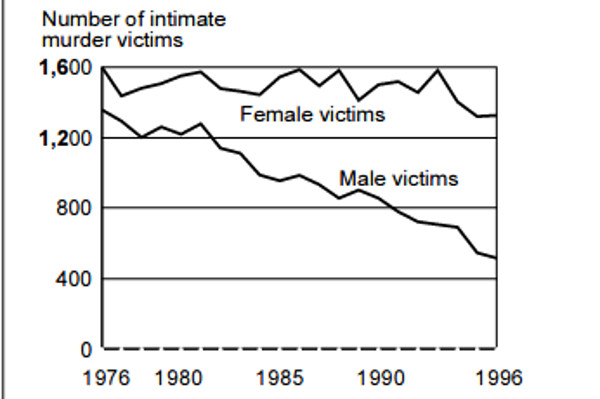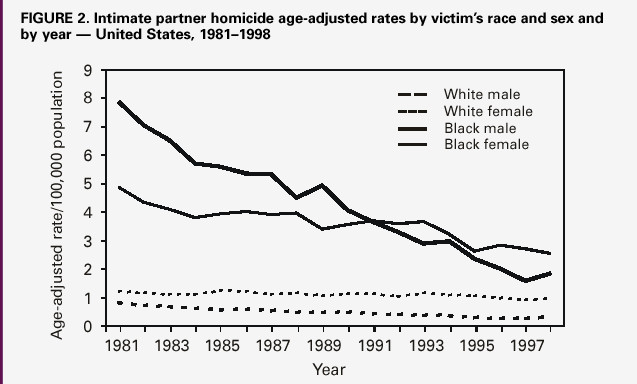John Lott and Carlisle E. Moody have authored a paper examining the effect of the Lautenberg Amendment prohibition on the possession of firearms by people subject to a domestic violence restraining order. The relevant statute is 18 U.S.C. § 922(g)(8). From the abstract:
We find that 18 U.S.C. § 922(g)(8) has no statistically significant beneficial impact on domestic murder, domestic femicide, domestic gun murder, or domestic gun femicide.
Lott and Moody's paper shows no policy advantages gained from the federal ban on the possession of firearms by people under a domestic violence restraining order. The ban fails to accomplish its stated goal of reducing intimate partner homicides. It fails to reduce even domestic femicides committed with guns. The findings of the research have been submitted to the Supreme Court as part of an Amicus brief for the United States v Rahimi case by the Crime Prevention Research Center.
The findings indicate exactly what some in the gun rights community long suspected. John Lott, Carlisle Moody, and the Crime Prevention Research Center have done the nation a significant service with this sophisticated analysis of 38 years of dense homicide data from the FBI Supplemental Homicide Reports (SHR). The data is available from 1976 – 2020. Bolstering and confirming the basic evidence from the SHR are detailed data on state-level domestic violence law and restraining orders.
A look at the data on intimate partner homicide shows a clear and convincing pattern in the SHR data. From 1976 to 1996, the intimate partner homicide rate dropped dramatically, as shown in this graph from a Bureau of Justice Statistics Factbook published in March of 1998.

The chart shows raw numbers. According to the source, female victims decreased by 1% per year, and male victims decreased by 5% per year. Because of the population increase, the rate of intimate partner homicides declined even more. From 1976 to 1996, the population increased by 24%. If the raw numbers of homicides had remained the same, the rate would have fallen by 24%. A cdc.gov paper shows intimate partner homicide rates which cover most of the period:

The Lautenberg Amendment, which created the ban on possession of firearms by people who are under a domestic violence restraining order, became effective on September 30, 1996. A curious thing happened. The number of intimate partner homicides, which had been falling for two decades, leveled off at about 1300 victims (with a known relationship) per year.
The total number depends on how the unknown relationship number is treated, which shows a tendency to increase from about 38% in 1997 to 48% in 2019. Those numbers are from this correspondent's notes while examining SHR data. The notes are not a rigorous study. This is an unexpected result, as the rate of total homicides dropped from 7.4 in 1996 to 4.5 in 2014.
It is difficult to know if the ban on possession of firearms by those under a restraining order increased intimate partner homicides, decreased intimate partner homicides, or had no effect on intimate partner homicides without a sophisticated statistical examination of the data. The sophisticated examination of the data, including analysis of numerous other variables affecting homicide rates, is supplied by the research done by Lott and Moody.
The Lott and Moody paper shows no statistically significant effect on intimate partner homicides. There has been a significant effect on the lives and fortunes of tens of thousands of people who have been victimized by the law.
About 50,000 people are listed as prohibited possessors because of domestic violence restraining orders in the NICS active records index at any one time. Because domestic violence restraining orders are supposed to be temporary, it is reasonable to believe over 40,000 people are victimized by the law each year. The detrimental effects are not small. Many people who depend on access to firearms for their careers have had their careers destroyed. Restraining orders are commonly used as a weapon in divorce proceedings to unjustly gain an advantage in custody battles or property awards. Severe economic and emotional hardships are common. How many people who have been victimized by the law become victims of crime because they have been disarmed is unknown.
The damage to the fabric of the nation is significant. Banning the ownership of firearms for a domestic violence restraining order has been, both practically and constitutionally, a monumental failure.
Find the original article in its entirety on AmmoLand.



Ehh, facts don’t matter to gun ban nuts.
Look restraining order is a joke it does not protect those that need protection must come up with something better, to many are hurt maimed or killed with a restraining order in effect, maybe the violent one locked up something, same as custody orders need to find away that the other cannot steal the child,